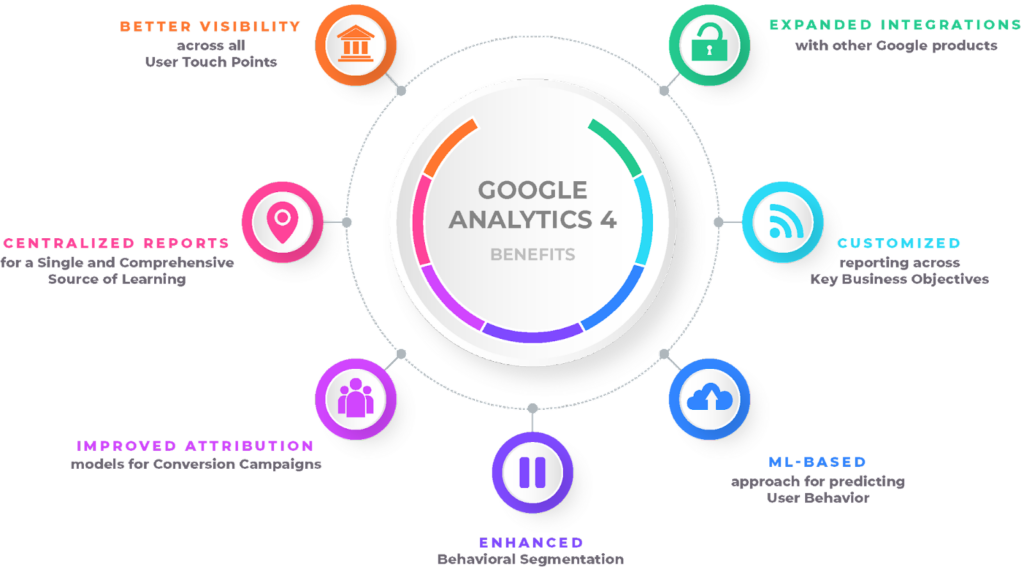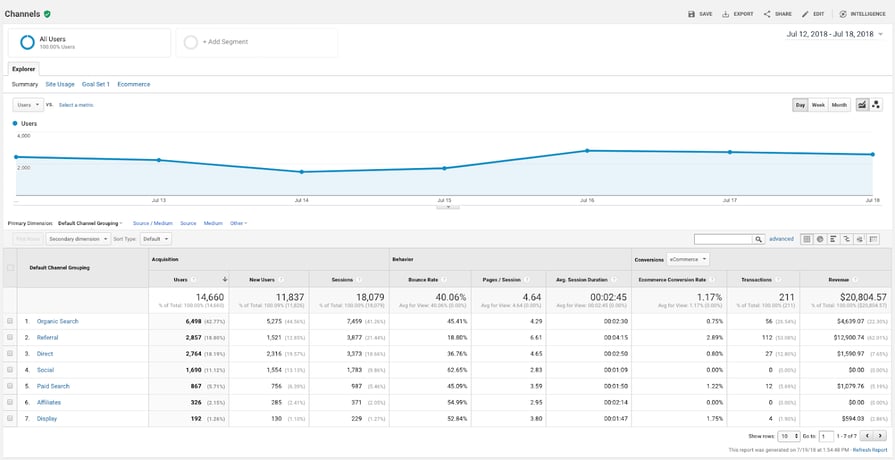Master Web Site Insights With Accurate Google Analytics Monitoring Code
The efficient use of Google Analytics hinges on the accurate execution of its monitoring code, an essential step usually overlooked by website owners. What are the common pitfalls that could threaten your monitoring efforts, and just how can you make certain accuracy in your technique?
Recognizing Google Analytics Basics
Google Analytics is a crucial device for website proprietors and online marketers, supplying important understandings into user behavior and web site efficiency. At its core, Google Analytics accumulates data regarding site visitors to a site, allowing users to examine metrics such as website traffic sources, individual interaction, and conversion prices. Understanding these fundamentals is essential for enhancing a site's efficiency and improving customer experience.
The system utilizes cookies to track communications, taping data such as web page sights, session durations, and bounce prices. This information is accumulated and presented through customizable dashboards, allowing individuals to picture trends over time. Trick performance signs (KPIs) can be kept an eye on, such as the overall number of users, brand-new versus returning visitors, and the geographical distribution of the target market.
Moreover, Google Analytics uses division features, enabling individuals to separate particular web traffic resources or individual demographics for even more targeted evaluation. By mastering these fundamental aspects, website owners can make enlightened decisions about web content approach, advertising projects, and overall site improvements. Inevitably, recognizing Google Analytics basics is important for leveraging information to drive growth and achieve organization purposes properly.
Setting Up Your Tracking Code

Replicate the offered tracking code and paste it into the HTML of your internet site. This ensures that the tracking code loads before any other material, permitting it to record information accurately.
After installment, confirm that the monitoring code is functioning properly by utilizing Google Tag Aide or the Real-Time reports in Google Analytics - when does the google analytics tracking code send an event hit to analytics?. This step is necessary to confirm that your data collection is active and exact, establishing the foundation for insightful analysis
Typical Monitoring Code Issues
Several internet site owners come across typical problems with their Google Analytics tracking code that can prevent data collection and evaluation. One widespread concern is incorrect installation. This may take place when the tracking code is positioned in the wrong section of the internet site's HTML, usually causing absent or incomplete data. In addition, having multiple instances of the monitoring code on a single page can cause inflated metrics, as user communications could be counted extra than as soon as.
An additional issue emerges from making use of advertisement blockers, which can protect against the monitoring code from implementing altogether, therefore skewing information. when does the google analytics tracking code send an event hit to analytics?. Moreover, failure to configure filters correctly can bring about the exclusion of vital traffic resources or the inclusion of undesirable reference spam, distorting the data collected
Site proprietors might additionally neglect the relevance of monitoring code updates, particularly when moving to Google Analytics 4 (GA4) from Universal Analytics. Lastly, inadequate testing prior to introducing modifications can lead to undetected errors in the monitoring code, further complicating information integrity. Dealing with these usual issues is critical for making certain precise tracking and informative analytics.
Analyzing Website Information Efficiently
Precise information collection is just the initial step in leveraging Google Analytics; the real worth hinges on efficiently evaluating that data to drive enlightened decision-making. To accomplish this, it is necessary to identify crucial efficiency signs (KPIs) that align with your organization objectives. Emphasis on metrics such as conversion rates, user involvement, and web traffic resources, as these will give insights into user actions and the overall effectiveness of your site.
Using Google Analytics' segmentation features enables a much deeper understanding of your audience. By damaging down data into specific demographics, actions, and web traffic channels, you can reveal fads and patterns that notify targeted approaches. Executing personalized reports and dashboards can streamline this process, enabling quick accessibility to important data.
Additionally, consistently evaluating information trends with time assists to identify abnormalities and opportunities for renovation. Make use of visualization tools to present data in a conveniently absorbable style, helping with a lot more efficient communication with stakeholders. Ultimately, the ability to evaluate website information navigate to this website effectively empowers services to make critical decisions that improve user experience, enhance advertising and marketing initiatives, and drive development.

Ideal Practices for Accurate Monitoring
Implementing efficient monitoring methods is vital for acquiring reliable data in Google Analytics. To ensure accurate tracking, begin click to investigate by correctly mounting the Google Analytics tracking code on every page of your web site. This can be achieved through a tag supervisor or by directly embedding the code right into the HTML.
Next, configure your Google Analytics account to omit internal website traffic. This can be done by establishing filters that recognize and get rid of brows through from your company's IP address, consequently protecting against manipulated data. In addition, use occasion monitoring to monitor certain customer communications, such as downloads or video plays, which typical page views might overlook.
Frequently audit your monitoring arrangement to confirm that all attributes, such as goals and ecommerce tracking, are functioning properly. Develop a consistent identifying convention for your events and campaigns to assist in much easier coverage and evaluation.
Lastly, take into consideration leveraging UTM criteria for projects to get insights into the efficiency of different advertising efforts. By complying with these best methods, you can boost the precision of your information collection and evaluation, eventually causing even more informed decision-making for your site.
Final Thought
By making sure the tracking code is appropriately positioned and consistently examined, site proprietors can catch essential customer interaction data, hence assisting in the identification of vital performance indications. Eventually, a durable monitoring structure enhances the capacity to drive interaction and enhance general web site efficiency.

Insufficient screening prior to introducing changes can result in unnoticed errors in the monitoring code, click to read even more complicating information integrity.Applying effective monitoring practices is crucial for getting dependable data in Google Analytics. By making sure the monitoring code is correctly put and frequently audited, website owners can catch crucial individual interaction information, therefore promoting the identification of key efficiency indications.